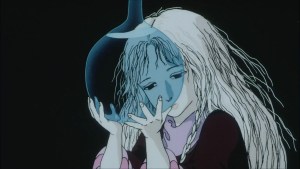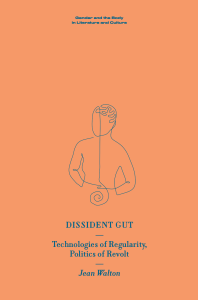Lauren A. Mitchell // By way of a preface, I’ve spent the last couple of weeks lingering over the subject of this post about how Donald Trump has been an inspiration for a number of violent imaginary characters. When I originally put it up, it was right before news of the Pittsburgh Tree of Life Temple Shooting. What horrific timing. And what constant heartbreak.
Like many, I can tell you that I am lately always disturbed and saddened by how a public rhetoric of hatred has mobilized a number of horrific events– in the last week alone, the Temple Shooting, the MAGbomber, the attempts at the legal erasure of Trans* identities, and the attacks on Black people at a Kroger supermarket. Before this I found myself broken open by the Kavanaugh hearings. When I wrote this post, it was to process, “what do we do?” I think through the “now what” in the name of two main questions: 1) How do we leave ourselves open to this hurt, this ongoing violence that will not get better until we–all or many of us– commit to a culture of healing, without going numb?; and 2) What can aesthetics teach us about this practice of non-numbness and healing? How can we train ourselves to not turn away from hurt? What have literature and film already been teaching us that we brushed past too quickly?
In this post, I’m writing, with some bitter irony, about how Trump has served as a leitmotif in the fictional construction of serial killers. But what I am also asking of readers is to think through the ways in which we can adopt the caregiving practice that many clinicians take on: to have to bear witness to the things that are disturbing and, in spite of our own grief, to care for the Other, who may be vulnerable, who may not have the option to turn away.
***
If you follow such things, you may have heard that controversial film director Lars von Trier outdid himself this year. When his new film, The House That Jack Built, a story told from the perspective of a deeply sadistic serial killer (played by Matt Dillon) premiered at the Cannes Film Festival, droves of audience attendees left the theater. A number of critics condemned the film. After remaining silent for some time, von Trier responded to the upheaval by saying that he was “pleased by the controversy” (Sharf 2018). In an interview with The Guardian, he defended the film, saying that “The House That Jack Built celebrates the idea that life is evil and soulless, which is sadly proven by the recent rise of the Homo trumpus – the rat king” (Shoard 2018).
Von Trier’s aesthetic construction, in the words of Magdelena Zolkos, effectively uses trauma as both a subject and a form, where the demand of audiences is not that they passively spectate the trauma on-screen, but also that they are traumatized (179). Case in point: The House That Jack Built is an experience where audiences will be both attached to and alienated by the inner working mind of a serial killer, who is unabashed in his methods of torture and cruelty for his victims—who notoriously include “women, children, and animals” (Sharf 2018). But this is not new. This is also the point of some canonical ür-controversial texts that appear in literary rosters. The House That Jack Built echoes, in both its traumatic content and its form, dark fictions like A Clockwork Orange, and almost uncannily, Bret Easton Ellis’ American Psycho.
The film is scheduled to come out sometime this fall, assuming it gets released. Confession: I barely made it through the trailer. I mention this because I study surgery and performance art for a living, but, it turns out, I am quite squeamish in the face of unabashed sadism. And like many, I will admit I have a vexed relationship with von Trier’s work. On the one hand, I admire his stunning visual approach, his development of atmospheric landscapes, his contributions to innovative filmmaking approaches that eschew overproduction (See the Dogme 95 Manifesto). On the other, I often find the content of his films too problematic to be productively controversial. The power of his films come in their aesthetics, rather than in their narratives, which repeat old tropes such that they are not, actually, all that subversive.
I find myself drawn back to von Trier’s comment that the The House That Jack Built is effectively an homage to the cruelty of the Trump era. This has a distinct likeness to American Psycho, written in 1988. For those who can stomach it, Ellis’ novel provides a written analogue to the film, insofar as it forces readers to tolerate a constant spectacle of violence and, somehow, to cultivate an attachment to—maybe a fascination for—the character. It feels like a violation of the implicit agreement described by Sayantani DasGupta between readers, writers, and caregivers as, “work [that] depends on entering into the imagined suffering of equally imagined characters” (980). In fact, it is the reader (or viewer) here who suffers.
What we make of Jack is yet to be seen until—if–the film is widely released, but what is so effective about Patrick Bateman, the titular American Psycho, is that by the end of the novel readers have a sense of how he is part of a heritage. He is one of many abhorrent Wall-street bro-dudes of the golden capitalist era of the 1980s, all young and white, who worship money in inverse proportion to how much they need it, who are all “Vice Presidents” of something, who harass and cause physical harm to homeless people and prostitutes, whose work life consists of reading through Zagat’s and sleeping with secretaries. Nighttime holds Bateman’s grotesque and belabored scenes of murder, dismemberment, and cannibalism juxtaposed against pornographic sex, such that bodies are constantly broken down into pieces, into organs.
And, in between all of that—the capitalism, the violence, the sex—it is easy to lose sight of a peculiar detail: the titular American Psycho and his awful friends worship Trump, whose name peppers the novel. They join yacht clubs because that is where they believe they might see Trump. Bateman and his girlfriend Evelyn talk over one another about extravagant murder and wedding fantasies (his and hers, respectively) and both sit rapt at attention when they think that they may have caught a glimpse of Donald and Ivana at a restaurant, stunned that they might cross paths with their idols.
American Psycho was published in 1991. I bring it and The House That Jack Built together to highlight that some of our aesthetic objects been having almost the same conversation, in similar ways. Von Trier and Ellis both embody similar privilege—successful white men—and are self-reflexive about their work. Ellis wrote American Psycho after his own stint working on Wall Street. Von Trier, similarly, posits in his trailer a statement that feels very transparent, both in what it says and also in how Matt Dillon reads the line, almost woodenly, as if reading from a speech: “Some people claim that the atrocities that we commit in our fiction are those inner desires which we cannot commit in our controlled civilization, so they are expressed instead through their art. I don’t agree. I believe Heaven and Hell are one and the same. The soul belongs to heaven and the body to hell.”
This self-reflexivity exposes a spectacle, a theatre of crueltyi, in the words of Antonin Artaud, who asserts that performance should be an experience that brings to the surface a (potentially) dark or otherwise inaccessible symbolic order for the actor and the spectator alike. The fact that The House That Jack Built and American Psycho, created with thirty years of space between them, take up the same provocation is compelling and distressing all at once. The theatre of cruelty is meant to bring interiority into the light, to find disturbing crevices in one’s psyche and to make them a point of focus in an attempt to do something productive, maybe even healing, to them.
Such a practice, of experiencing trauma as both a subject and a form, has the potential to train viewers to not turn away from that which makes them—us—uncomfortable. Like posts before mine, I challenge a definition of empathy that asserts we should imagine a life of the Other, when, in actuality, this is, in the words of Bertolt Brecht, limited, even narcissistic.
I can’t help but find pause in the fact that the Trump name has found its way into a celebratory narratives of violence. American Psycho and The House That Jack Built appear to want to alienate viewers by showing the gory details of serial killer sadism, but it is a bitter, bitter irony that every week there is another shooting, another act of violence. And, these two works bookend a conversation, specifically about Trump, that has been happening for thirty years. At what point do we need to notice that this isn’t just part of a subversive fiction anymore?
Trump, himself, is an icon, a symptom, of larger problems. Quoth the prophet David Bowie, “I’m afraid of Americans.” Trump is a mirror to the “banality of evil,” in the words of Hannah Arendt. We have been reminded daily with every new act of legal, emotional, and physical violence that enters into our news cycle. That, to me, is where we need to see the horror: violent desires are being enlivened by our political environment, and not just limited to a sociopathic few.
Von Trier’s gruesome trailer ends with Jack’s calm voiceover, as he quietly looks into the camera, “When I think about all the things I’ve done in my life, without in any way resulting in punishment…”
He trails off. What else is there to say?
i Cruelty in Artaud’s work is nominal, meaning that “Theatre of Cruelty” is meant to be a psychoanalytically driven theatre experience, where no stone of one’s mental life goes unturned, but not necessarily overly violent or gruesome (it often is). My preferred example when I teach Artaud is David Lynch’s Eraserhead.
Works Referenced
Arendt, Hannah. Eichmann in Jerusalem: A Report on the Banality of Evil. New York: Penguin Books, 1963.
Artaud, Antonin. The Theater and Its Double. New York: Grove Press, 1958.
Brecht, Bertolt, and Willett, John, Ed. Tr. Brecht on Theatre: the Development of an Aesthetic. 1st ed. New York: Hill and Wang, 1964.
Dasgupta, Sayantani. “Narrative Humility.” The Lancet, volume 371, number 9617, 2008, 980-81.
Dogme 95. “Dogma 95 Manifesto.” Dogme95.dk- A Tribute to Dogme 95. www.dogme95.dk/the-vow-of-chastity/. Accessed 22 October 2018.
Ellis, Brett Easton. American Psycho. New York: Vintage Books, 1991.
Sharf, Zack. “Lars von Trier Enjoyed ‘House That Jack Built’ Outrage at Cannes: ‘It’s Quite Important Not to Be Loved by Everybody.’” Indiewire, 17 May 2018. www.indiewire.com/2018/05/lars-von-trier-reacts-house-that-jack-built-outrage-cannes-1201965672. Accessed 22 October 2018.
Shoard, Catherine. “Lars von Trier Inspired by Donald Trump for New Serial-Killer Film.” The Guardian, 14 February 2017. www.theguardian.com/film/2017/feb/14/lars-von-trier-donald-trump-the-house-that-jack-built. Accessed 22 October 2018.
Von Trier, Lars, director. The House That Jack Built. Zentropa, forthcoming 2018.
Zolkos, Magdalena. “Violent Affects: Nature and the Feminine in Lars von Trier’s Antichrist.” Parrhasia, number 13, 2011, 177-189.


